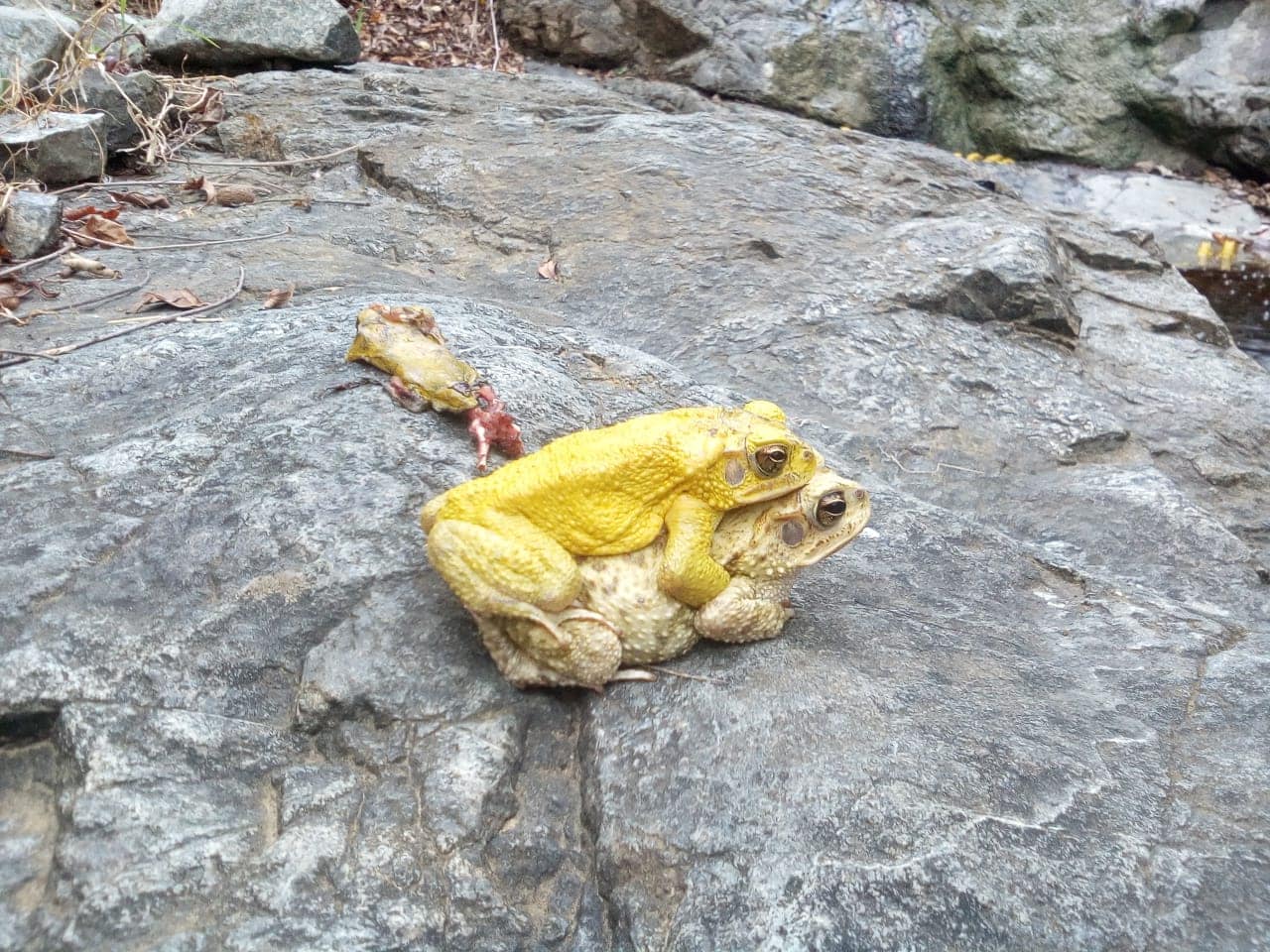Today’s featured amphibian is the yellow toad, a creature whose method of reproduction is often studied. They are explosive breeders that exhibit dynamic sexual dichromatism. What does that mean? Let’s find out.
The yellow toad or Neotropical yellow toad (Incilius luetkenii) is known as the sapo amarillo in Spanish, which translates to yellow toad. As one would imagine, this medium-sized toad is… brown. The female yellow toad is brown 100% of the time and the male yellow toad is brown 99 point something percent of the time. The name is derived from that intriguing >1% of the year when the male seemingly magically shifts from dull brown to bright yellow.
The male’s short-lived color transformation from muted brown to dramatically yellow is an example of dynamic sexual dichromatism. Regular old sexual dichromatism is when there’s a color difference between the male and female of the same species. Dynamic sexual dichromatism is when that color difference between the sexes only happens for a limited amount of time. In the case of the yellow toad, the male is bright yellow for only a matter of hours.
The male’s color shift from brown to yellow coincides with the first significant rain of the year. These toads live in tropical dry forest ecosystems which have prolonged periods without rain. As the first hard rain falls, signaling the end of the dry season, yellow toads emerge from aestivation, which is a state of dormancy similar to hibernation. The newly vigorous toads immediately begin to gather around growing ponds and streams, preparing themselves for some explosive breeding.
Explosive breeding species are species that do all of their breeding in a very short period of time. In the case of the yellow toad, all of the newly yellow males begin to gather around the edges of water sources recently produced by the rains and they begin calling for females. Before long, the females begin arriving to the pool party, attracted by the calls of the males.
At this point the males begin fighting amongst themselves attempting to latch onto the females in an embrace called amplexus. The males cling to the back of the females for several hours, aiming to fertilize the thousands of eggs that the female will produce. The male’s bright yellow color actually begins to fade while in amplexus.
There are a lot of interesting scholarly articles studying the yellow toad’s reproduction. Some study the exact purpose of the male’s color change, while others study the types of calls the males emit at the breeding pools. Outside of the interest in their explosive breeding, there isn’t a ton of information about these toads. We’re left to assume that the rest of the year they lead fairly run of the mill toad lives, avoiding predators, eating invertebrates and whatnot.
In May of 2019, I had the amazing luck of stumbling upon what must have been hundreds of yellow toads surrounding a water source, calling and doing their explosive breeding thing the morning after the first hard rain in Guanacaste. At the time I didn’t know what I was looking at, but I knew it was awesome, so I sat there with them for as long as I had time for. Before I left, I set up a camera trap on one of the puddles.
The very next day I returned with a more open schedule prepared to sit with the toads for hours. When I arrived the puddle was silent. The only toads present were just parts of toads left by predators on the surrounding rocks. That’s how quickly the event had started and finished. Luckily, my camera trap recorded a few videos of the fleeting episode.
About the Author
Vincent Losasso, founder of Guanacaste Wildlife Monitoring, is a biologist who works with camera traps throughout Costa Rica. Learn more about his projects on facebook or instagram. You can also email him at: vincent@guanacastewildlifemonitoring.com






